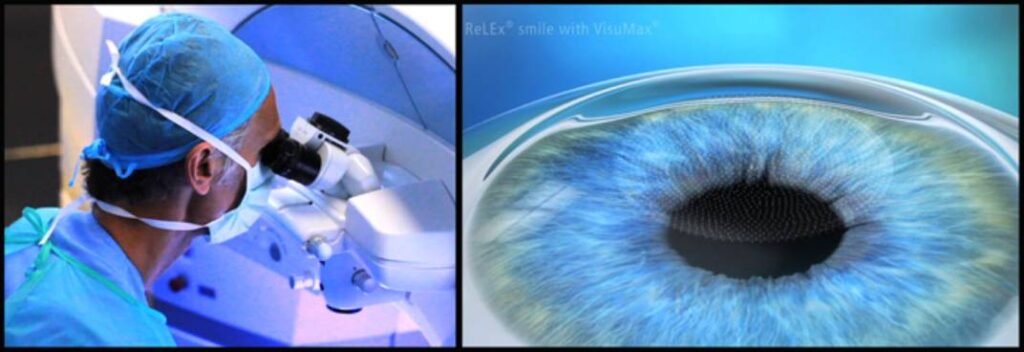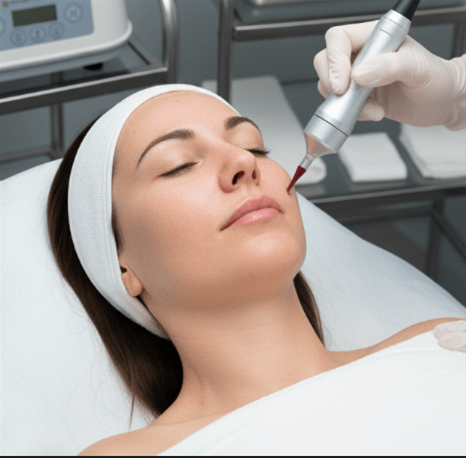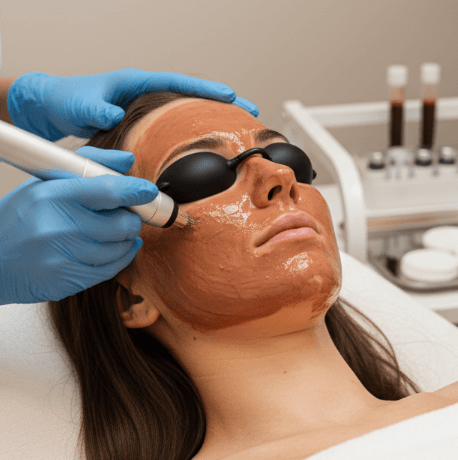SMILE (Small Incision Lenticule Extraction) is a revolutionary laser vision correction procedure known for its safety and rapid recovery. However, like all surgeries, some patients may experience temporary side effects during the healing process. Understanding these common side effects and how to manage them effectively can make your recovery smoother and your vision clearer.
This comprehensive guide covers the most frequent post-SMILE side effects — including dry eyes, halos, glare, and visual fluctuations — and practical tips for managing each one.
1. Dry Eyes After SMILE Surgery
Why Does Dry Eye Occur?
- SMILE involves reshaping the cornea, which can temporarily disrupt corneal nerves responsible for tear production and blinking reflex.
- This can reduce tear film stability and lead to dryness, irritation, or a gritty sensation.
Symptoms:
- Burning or stinging sensation
- Itching or foreign body sensation
- Blurred or fluctuating vision
- Sensitivity to wind or air conditioning
How to Manage Dry Eyes:
- Use artificial tears frequently (preservative-free preferred) to keep eyes lubricated.
- Avoid dry environments, direct fans, and prolonged screen time.
- Stay hydrated by drinking plenty of water.
- Avoid rubbing your eyes, which can worsen symptoms.
- If prescribed, use anti-inflammatory eye drops to promote healing.
- Warm compresses may help stimulate natural tear production.
- Consider discussing with your surgeon if dry eye persists beyond 3 months; some patients benefit from punctal plugs or other treatments.
2. Halos and Glare Around Lights
Why Does It Happen?
- The corneal healing process can cause temporary irregularities in the optical zone.
- Nighttime or low-light conditions can amplify light scattering, causing halos or glare around headlights, streetlights, or screens.
Symptoms:
- Rings or circles around lights
- Starbursts or bright glare, especially at night
- Difficulty driving at night
How to Manage Halos and Glare:
- Use anti-glare sunglasses outdoors during recovery.
- Avoid driving at night until halos diminish.
- Limit screen time and ensure good ambient lighting to reduce eye strain.
- Practice patience — halos generally decrease over weeks to months as the cornea smooths out.
- If severe, consult your surgeon for evaluation; enhancements or specialized lenses may be options in rare cases.
3. Fluctuating or Blurry Vision
Causes:
- Temporary swelling or irregular healing of the corneal tissue.
- Dry eyes can also cause fluctuating clarity.
- Visual cortex adjustment to new visual input.
Management Tips:
- Follow all post-op medication schedules.
- Use lubricating drops as needed.
- Avoid eye strain from excessive screen use or reading.
- Attend scheduled follow-ups to monitor progress.
- Visual fluctuations generally improve within 1–4 weeks.
4. Mild Eye Discomfort or Foreign Body Sensation
Why It Happens:
- Incision healing can cause mild irritation or the feeling of something in the eye.
- Minor inflammation is a normal part of recovery.
How to Relieve Discomfort:
- Use lubricating eye drops.
- Apply cool compresses for soothing relief.
- Avoid rubbing your eyes.
- Contact your doctor if pain intensifies or persists beyond the first week.
5. Light Sensitivity (Photophobia)
Causes:
- Healing corneal tissue can be more sensitive to bright light.
- Temporary inflammation may increase light sensitivity.
Management:
- Wear UV-blocking sunglasses outdoors and in bright indoor settings.
- Use prescribed anti-inflammatory drops.
- Reduce exposure to bright screens and harsh lighting.
- This usually resolves within a few weeks.
When to Contact Your Surgeon
While side effects after SMILE are typically mild and transient, seek immediate medical attention if you experience:
- Severe or worsening eye pain
- Sudden decrease or loss of vision
- Persistent redness or discharge
- Light sensitivity that worsens instead of improves
- Excessive tearing or swelling
Early intervention can prevent complications and protect your vision.
Summary Table: Common SMILE Side Effects & Management
| Side Effect | Symptoms | Management Tips | Expected Duration |
|---|---|---|---|
| Dry Eyes | Burning, stinging, irritation | Artificial tears, hydration, avoid dryness | 1–3 months |
| Halos & Glare | Rings or glare around lights | Sunglasses, avoid night driving, patience | Weeks to months |
| Fluctuating Vision | Blurry or inconsistent clarity | Eye drops, rest, follow-ups | 1–4 weeks |
| Mild Discomfort | Foreign body sensation, irritation | Lubricating drops, cold compresses | 1–2 weeks |
| Light Sensitivity | Sensitivity to bright light | Sunglasses, reduce screen time, anti-inflammatory drops | Few weeks |
Managing side effects effectively after SMILE eye surgery is crucial for a smooth recovery and optimal vision. Most symptoms improve with time and proper care. Always communicate openly with your surgeon about your symptoms to ensure personalized guidance.




